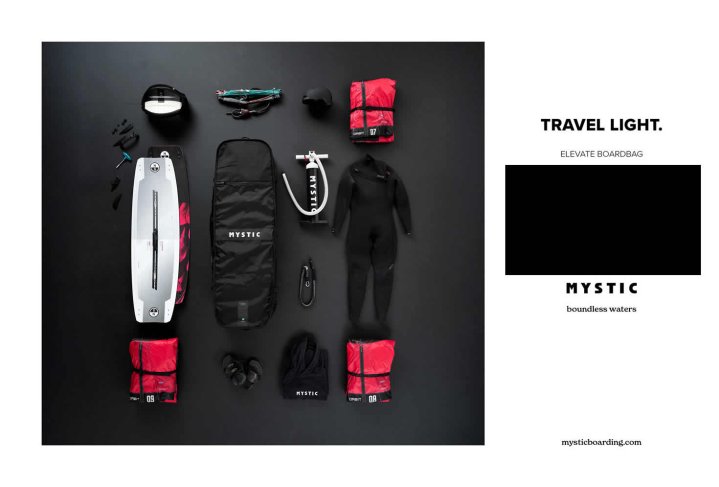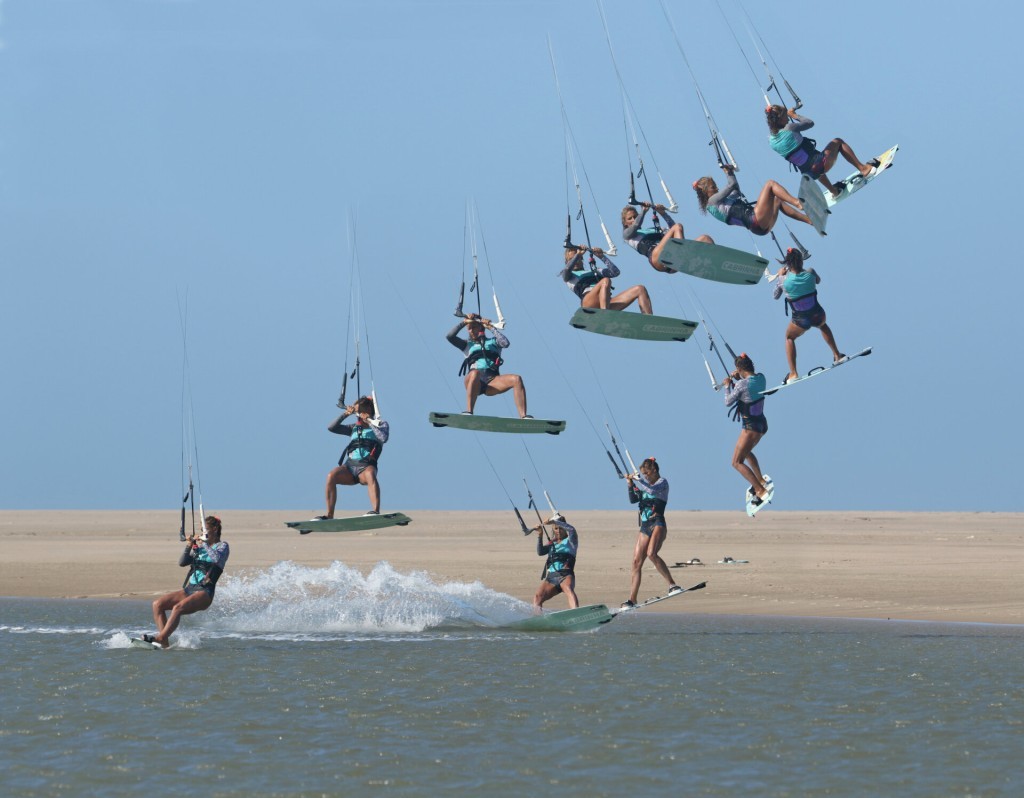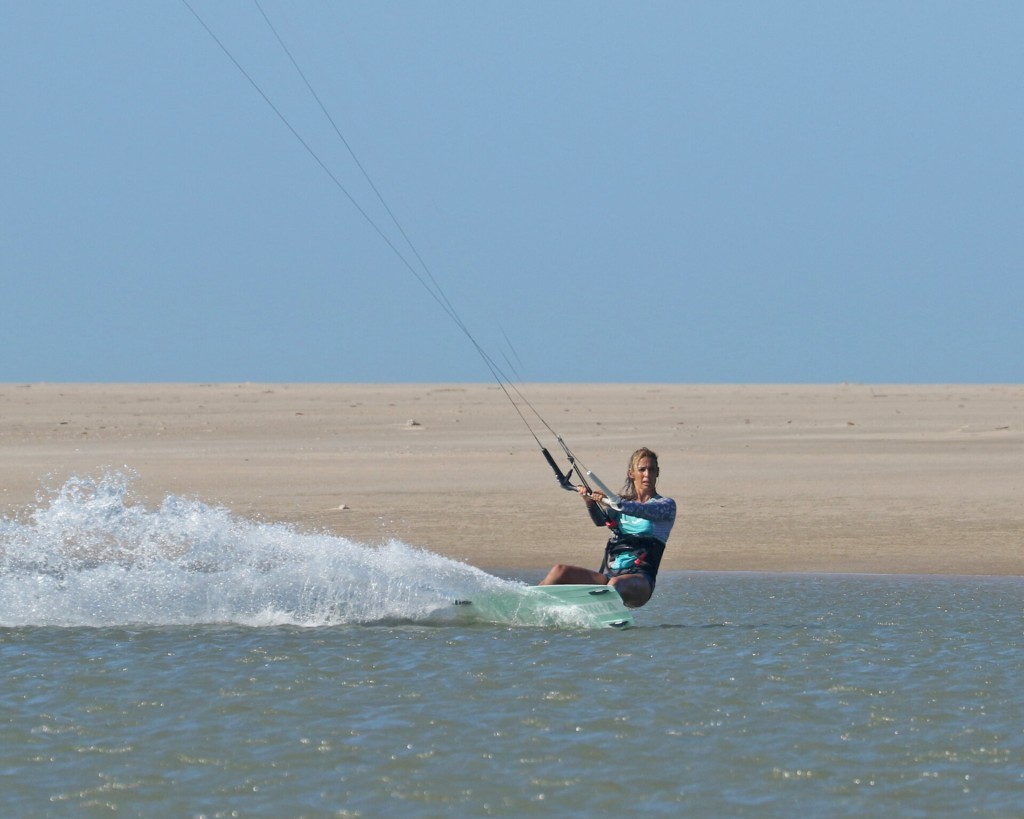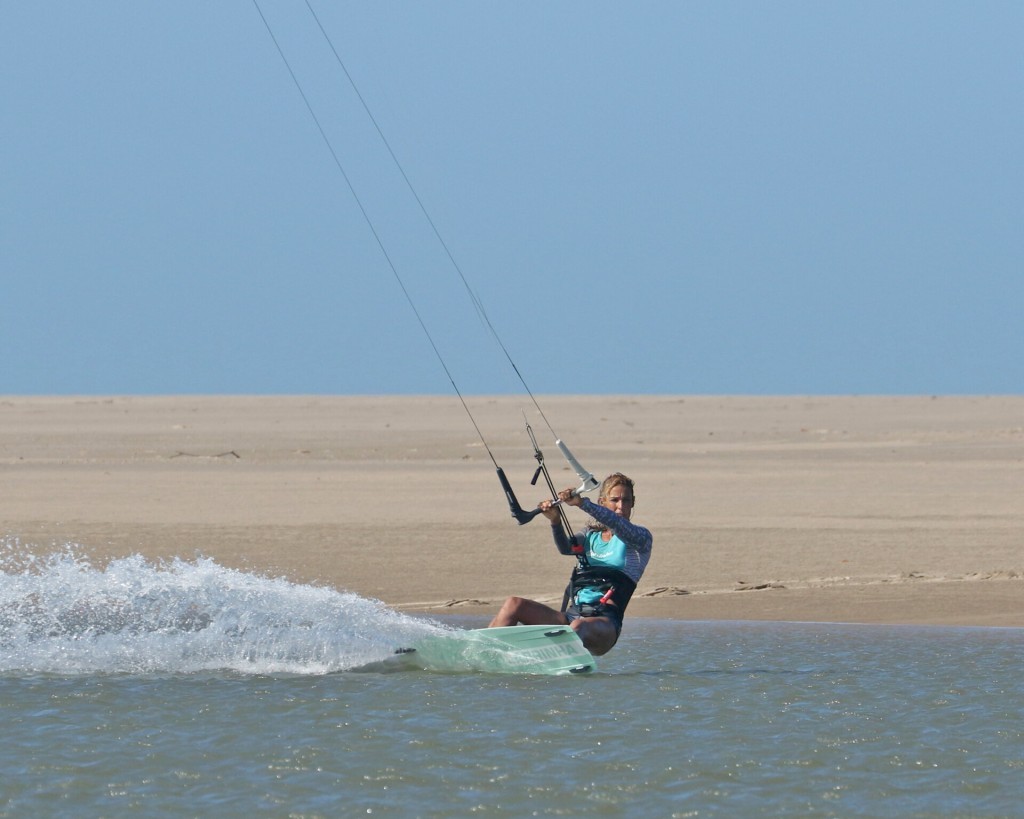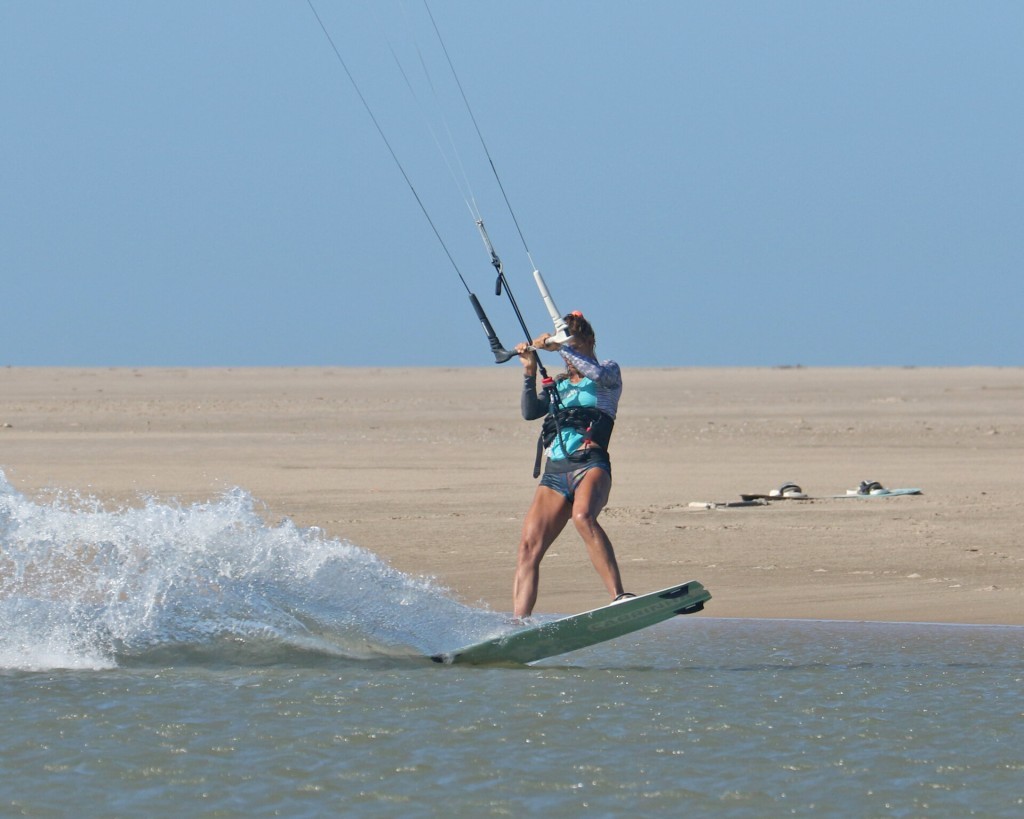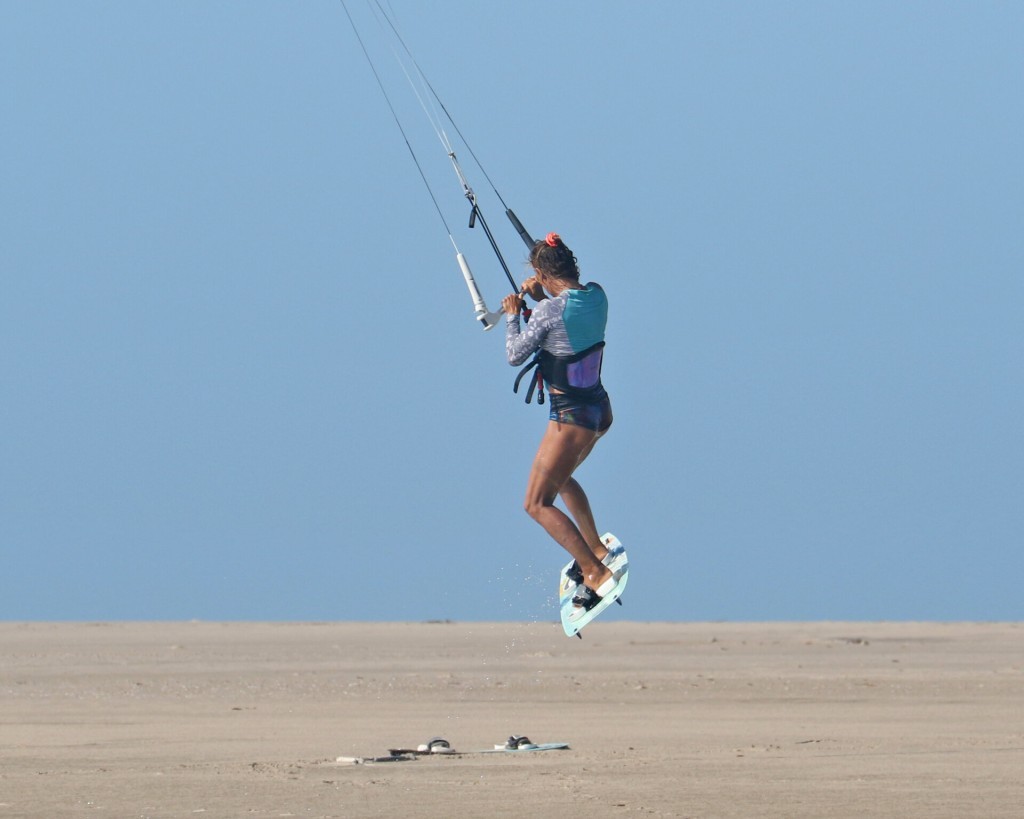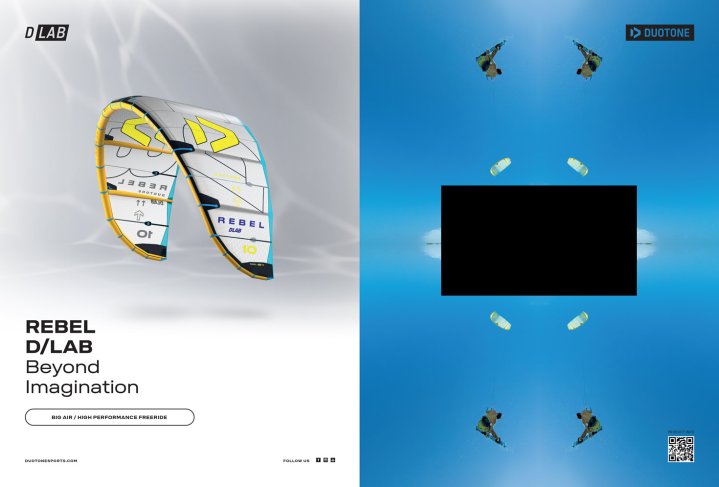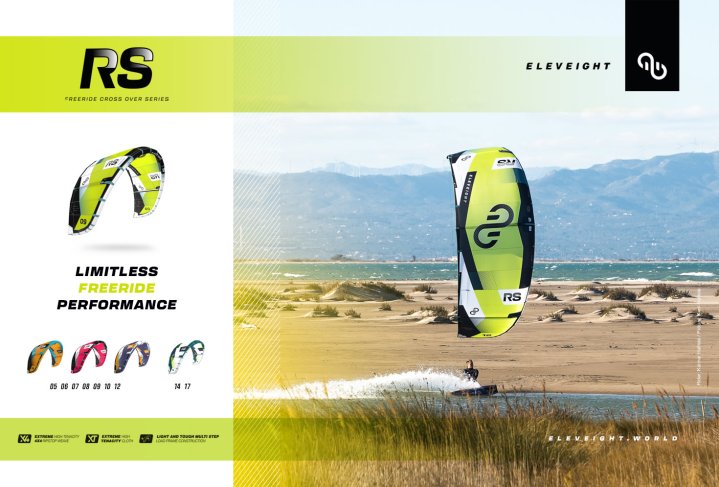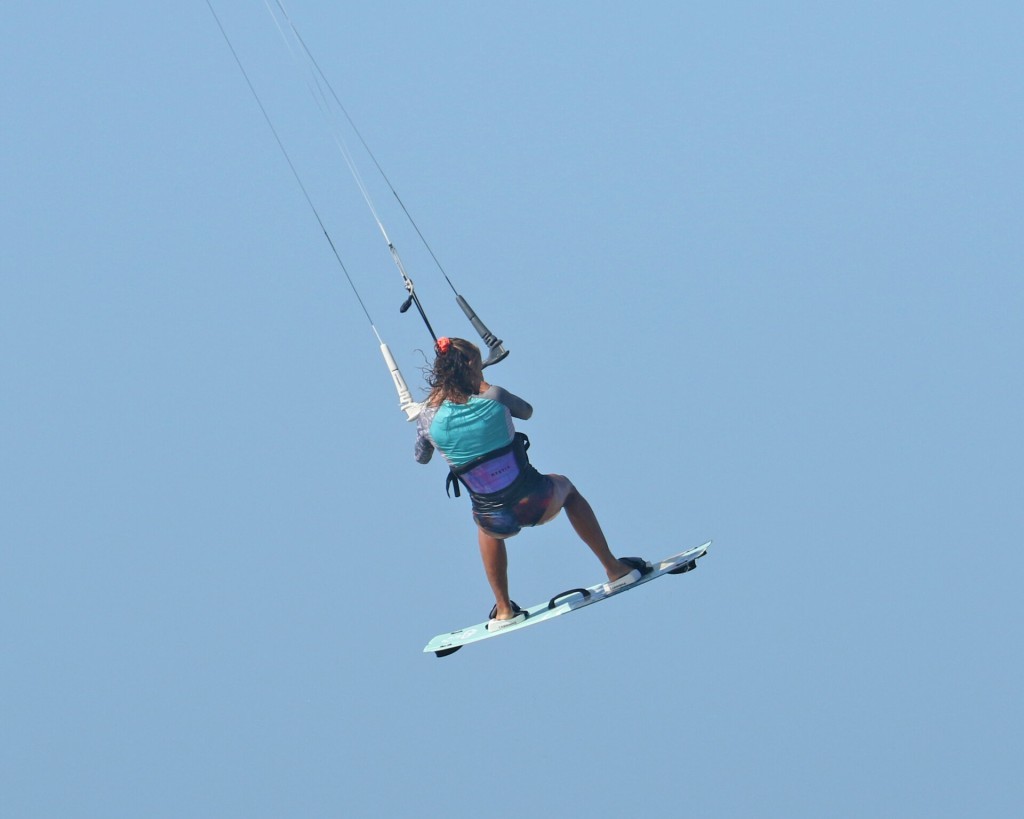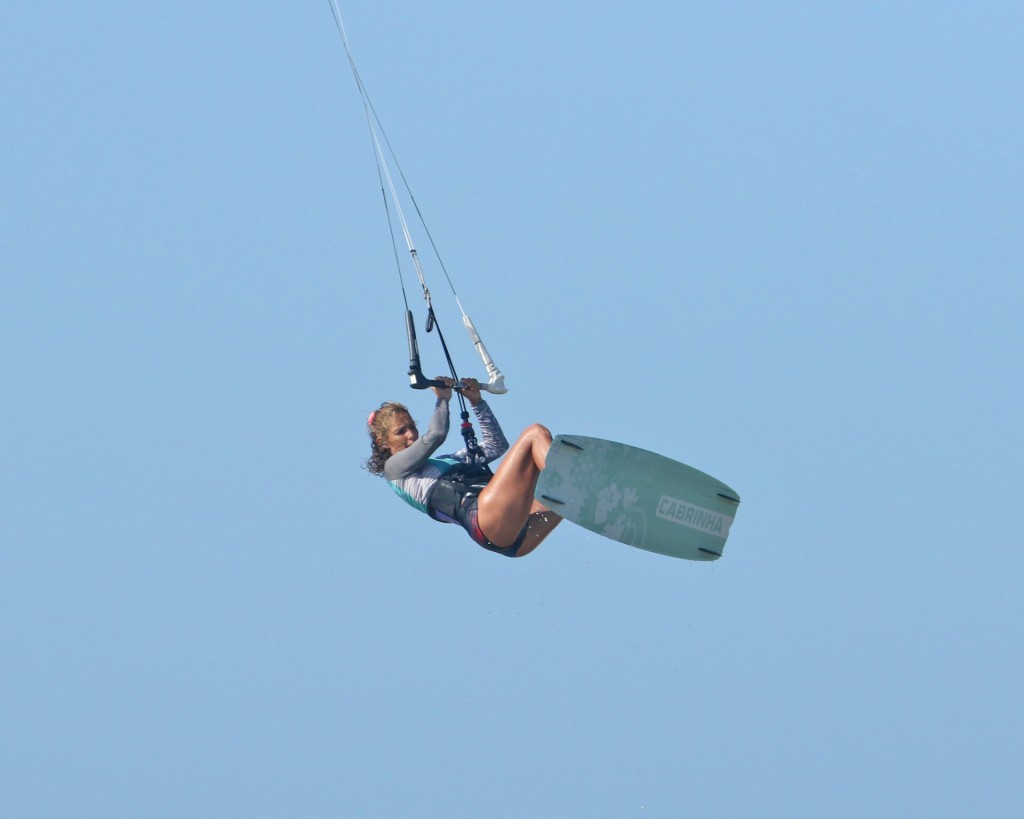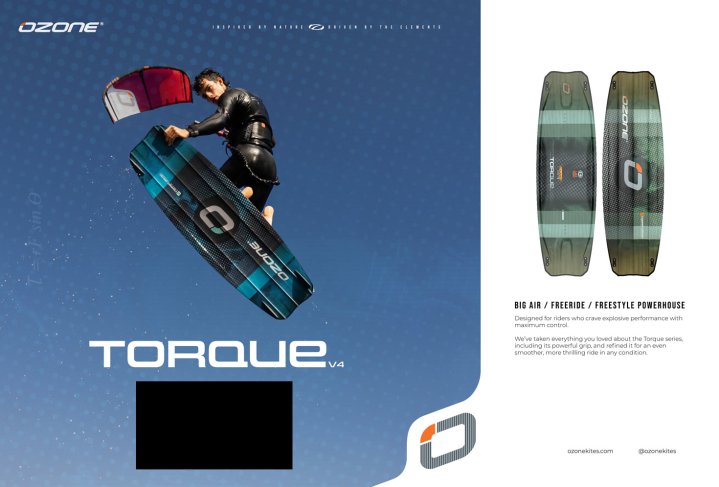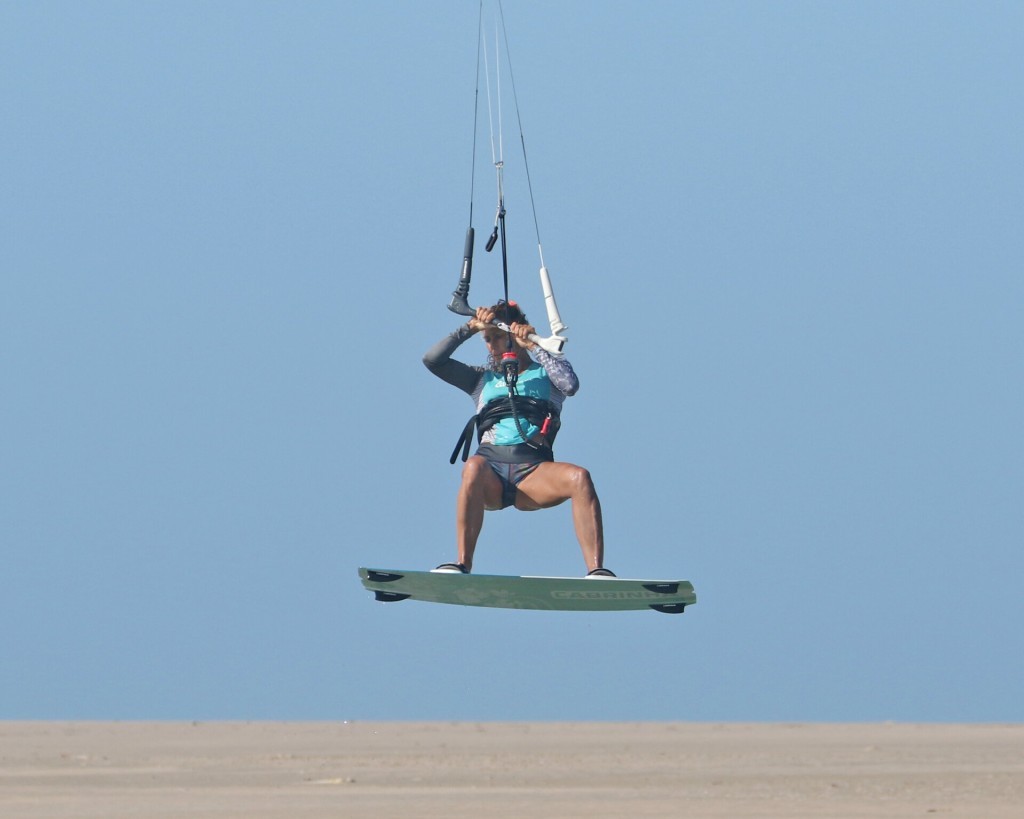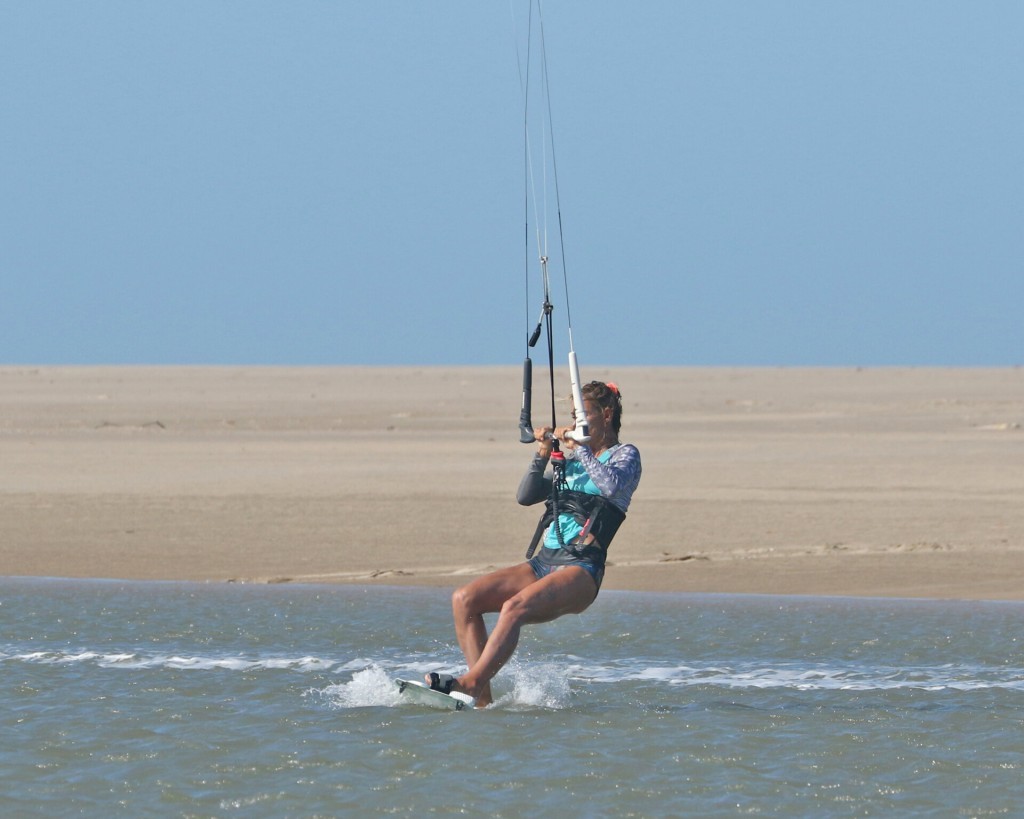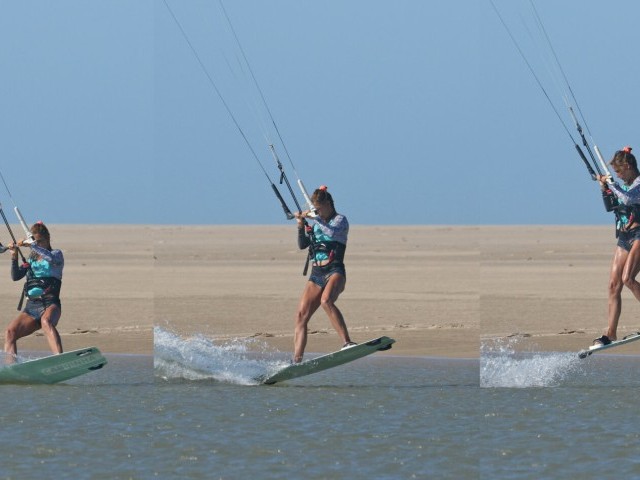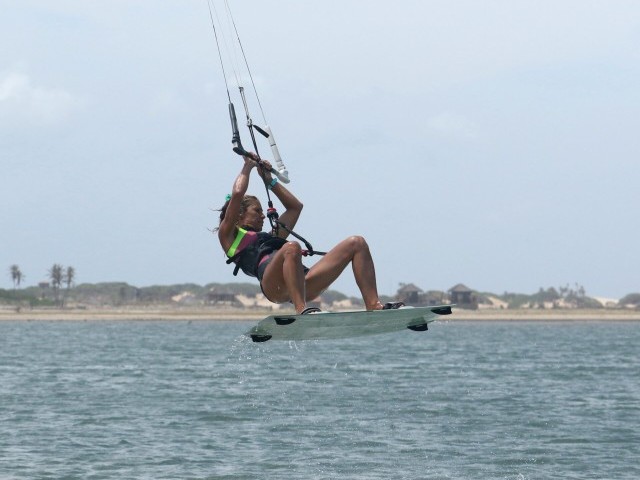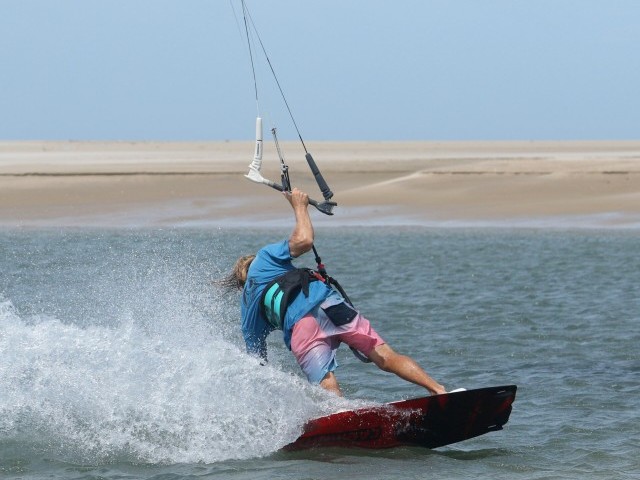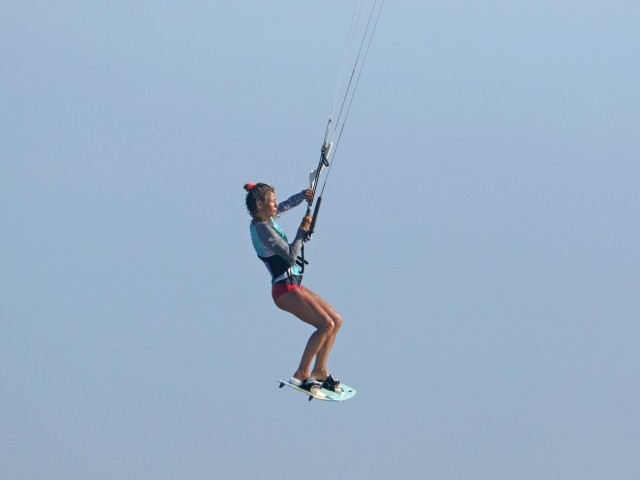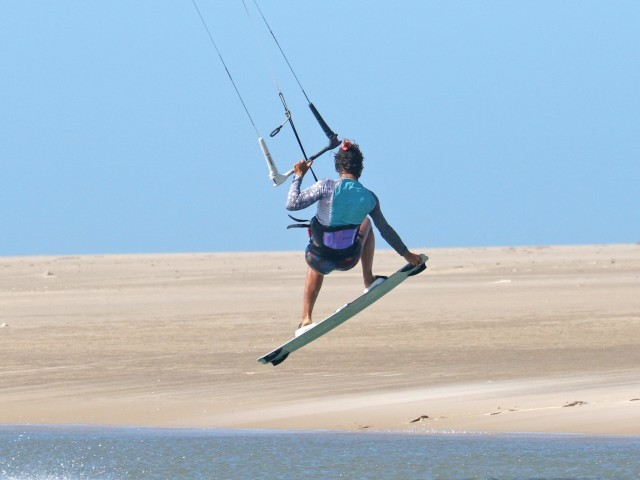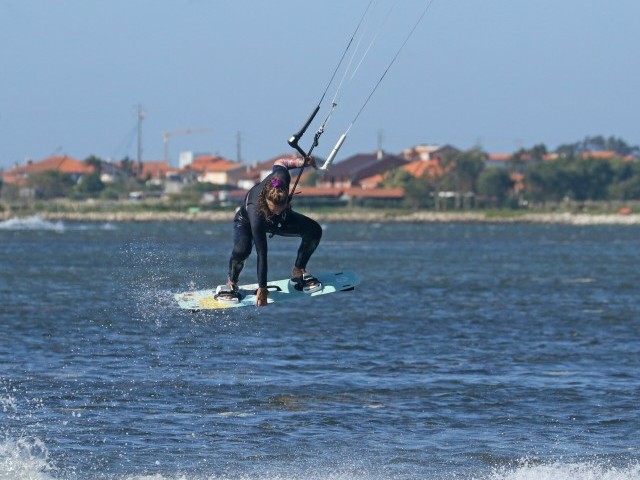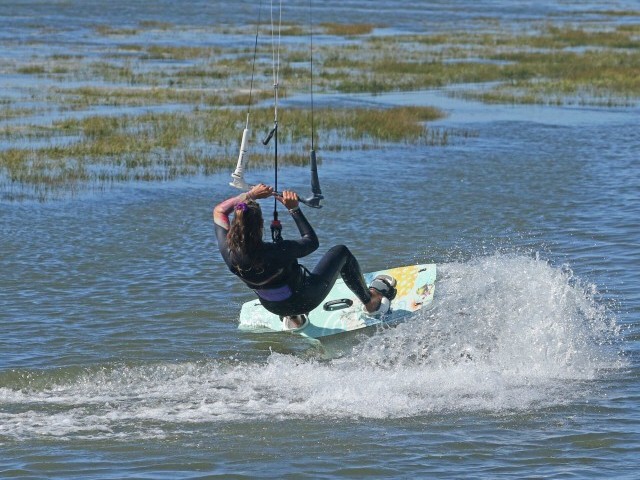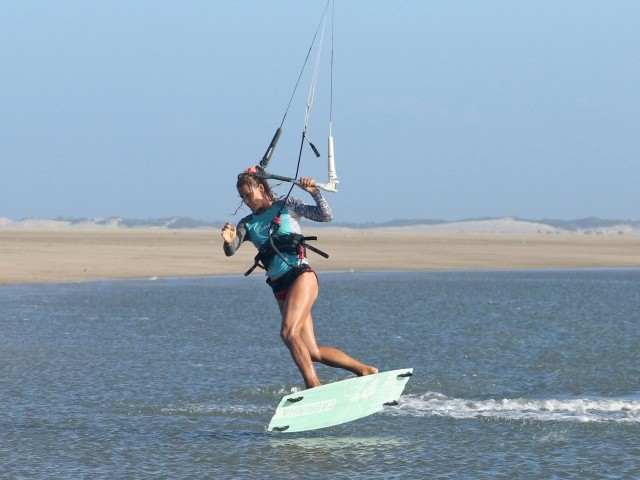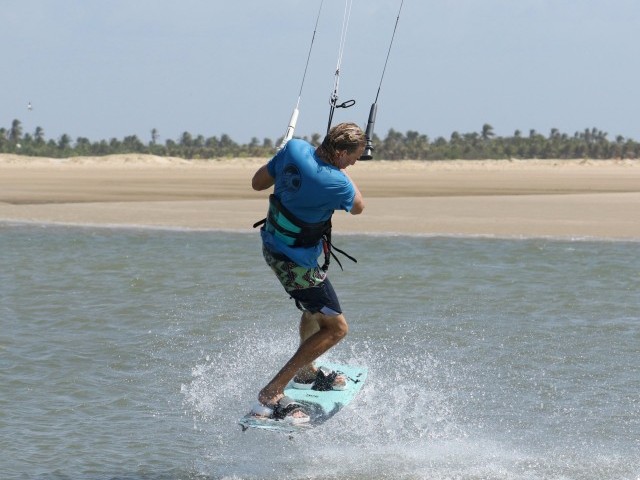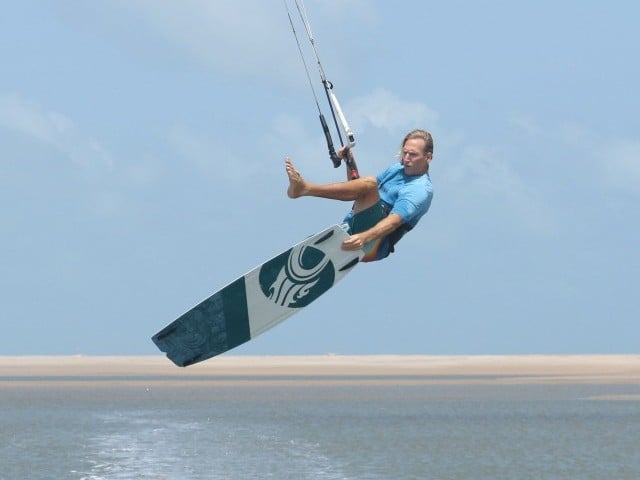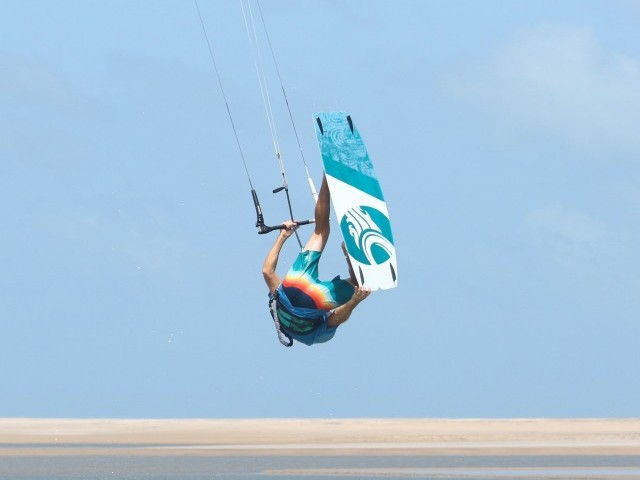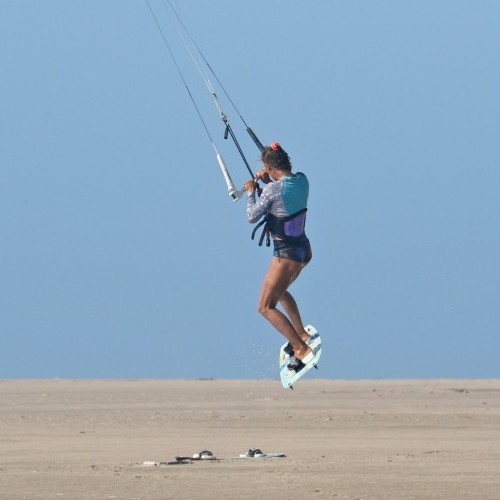
Front Roll
Technique / Intermediate
The front roll is a move that is revered and feared. The yang to the back roll’s yin. Can you afford to have one but not the other? If you answer no, you’ve come to the right place. Using your kite to jump, the sent front roll has the potential to be on your all-time favourites list; it feels so good, and hundreds of progressions and variations must make it both a fundamental and an absolute must! It’s so rewarding as, for a moment, you haven’t got a Scooby where you are; it’s all a blur, and then suddenly, like waking up from a crazy dream, you recognise the world around you again.
Much like the oft-dreaded back roll we covered last issue, the front roll is easily misunderstood. There’s no somersault or inversion; it’s just like swinging on a rope again, turning 360 under your kite. Funnily enough, we often teach the front roll before the back roll because once you can get your head around it, there’s not much to it. And therein lies the secret: a lot less is definitely more, and actually psyching yourself up for it is one of the main challenges. Hopefully, we can make it understandable and achievable over the next page or two, so here goes…
We’re all clear that the rotation is a 360 spin around a vertical axis. This time, you rotate the other way, looking back to where you’ve just come from over your rear shoulder so that your back faces the direction of travel! This is what can be intimidating, as you’ll effectively be rotating blind.
There is good news, though. If you get the rotation and the kite stays above you, you’ll return to reality quickly.
This is a sent front roll, using your kite for lift. Your approach and kite movement are the same as you would for a jump—more good news, nothing new here.
As per all moves, when you can’t have a cheeky peak at your kite because you’re too busy doing something else, like rotating, there are two golden rules:
- Get the jump sorted before take-off. By this, we mean sending the kite and levelling the bar before you leave the water. This stops the kite from moving any further back and asks it to hang around at midday whilst you still know where the level to the horizon is.
- Don’t put any pressure on your bar. Once the bubble is in the middle, it should stay there. This means no supporting yourself on the bar and definitely no using the bar to pull yourself around the rotation. This may sound like we’re stating the obvious, and of course, it is easier said than done. However, it all comes down to the crux of the move: initiating sufficient rotation.
All in the kick
If you get enough spin, you’ll rotate fully around. So, how do you get the impetus for this spin? It’s very much all in the kick. You were kicking off against your board, extending your flexed back leg whilst turning your head and shoulders. The common problem herein lies in where you kick yourself. The seemingly obvious and all too tempting option is to launch yourself forward (as the name suggests) across and over your board's nose. This is best avoided. Think about your kite and where it and your lines are. You’ve got to go around your lines. You’re not diving down; you’re turning around. As such, you must kick yourself upwind and away from the board while turning your head and shoulders. It’s like sitting on a swivel chair and kicking against your back leg. You turn around the swivel; you don’t launch yourself over the desk.
Without wanting to oversimplify the front roll, in essence, if you get the kick right, the rest just happens. All the work is at the beginning. We can’t emphasise this enough. It’s a millisecond action that pretty much dictates whether you get around or not.
Sequence 1
If you look at this sequence, you can see the kicking action to initiate your front roll. Karine sorted the kite, edged, sent, and levelled. Now, she needs to get her kick in, and the impetus for her front roll is part of her take-off. You can see that her bar is level and out on the sweet spot (more on that in a mo.), and she’s kicking against her edge, extending her back leg whilst turning her head and shoulders back. As an extra, she brings her front knee up and keeps her chin in. All of this adds up to rotation. The bit not shown in the photos is the effort and force involved in the leg extension kick-off. We’re talking full mule mode here, not a gentle game of footsie! Once you’re on your way around, it’s a matter of leading with your eyes, keeping your head turned, and trusting your rotation.
This is all good and well, but it’ll only work if the kite is in the right place—around 12 o’clock and, if anything, just a tad past 12. This way, the kite almost pulls back against your harness hook and helps the rotation. If your kite doesn’t get up to 12, it’ll pull you forward, and as we’ve just discussed, this doesn’t help one iota, as it’ll kill your rotation.
And before we move on to the method, we should also ponder the bar and sweet spot. As you send your kite up and around the edge of the window to jump, you feather the bar out to follow the sweet spot so that you can hold your edge. You mustn’t pull the bar in until after you’ve kicked. If you pull first, the kite will pull you up and over the board, off your edge. This way, you won’t get the energy you’re after for the rotation and won’t have an edge to kick against.
OK, now that you know how crucial the kick-off is, let’s have a look at the rest…
Pic A. Your Approach
You have to tackle your front roll as a jump. It doesn’t need to be much, just enough to get you off the water, but if you tone it down too much, you won’t feel as comfortable as you can on take-off. All the usual applies. Good upwind edge, a bit of speed so that the board is lively, kite at either 11 or 1 o’clock, hands centred on the bar, sweet spot trimmed to the centre of throw so that you’re comfortable, bum low, legs resisting, weight centred, back leg flexed but solid, deep water and lots of space. Here, Karine ticks all of the above.
Pic B. Send
Same again, as you would for a small jump, you need to get some air and support, so send the kite back. A short, sharp send is better than a slow drift as you can hold your edge and have something to kick against for your take-off and rotation impetus. Karine steered the kite up, feathering the bar out to follow the sweet spot so that she could edge. Her board carries on in the same direction, her bum remains low, and she keeps resisting.
Pic C. Sorted, OK, Take-Off
As previously discussed, get your kite sorted and initiate your front roll-take-off. First job: level the bar to stop the kite. Do this whilst your bar is still in the sweet spot. You can see that Karine’s shoulders are level, and her bar is level; she’s ready. Now, you can kick yourself into your rotation, extending your back leg and turning your head and shoulders whilst lifting your front knee. Once you’ve kicked, you can pull the bar gently with a touch. But as usual, the power from the kite and your weight are joined at the harness hook, and nothing is going through your arms.
Pic D. Knees Up
Once you’re on your way up and around, lift your knees. The smaller you are, the quicker you rotate and the more balanced you remain. Karine starts to lift both her knees; her head is committed to the rotation. Her shoulders are turning, and her bar is pretty much level with her shoulders. As you get more comfortable and start to send the kite with more meaning, you can give it a little tweak on your front hand to instruct it to come with you. You can see that Karine’s kite is slightly past 12, but it’s not a problem as she has support and is on her way around.
Pic E. Halfway
If you’re spinning quickly, this stage will pass in the blur above. However, if you’re rotating more slowly, this halfway house should be a moment of calm. If your eyes focus upwind, it’s easy to panic, as it’ll give you the sensation of flying backwards, sitting in a train carriage, facing the wrong way. Ignore your inner voice, which will suggest that you can pull yourself around. You won’t know which hand is which for a start, so pulling won’t help. Instead, ensure you’re looking over your shoulder and waiting for your first glimpse of water downwind. Turn your head further, and a little Timotei hair flick will amaze you with its effectiveness. Where your head looks, the body will follow. The good news is, if you feel too disorientated, you can do nothing and float down under your kite with no drama. This is considerably preferable to yanking on a hand, hoping it’ll bring you around. The main takeaway is that Karine’s kite is up around 12, and she’s still leading with her head, looking over her shoulder to keep the rotation going. It’s also worth noting that she’s not looking up to see where the kite is. If you do, it’ll throw you off balance, off-axis and disorientation, which ramp up to another level!
Pic F. Relief Excitement & Jubilation
You've officially cracked it as you come around and start to see the playground you recognise. Whether you land perfectly or drop into the water doesn’t matter. What does is that you’ve committed to the rotation, and you got it, claimed it mentally, and now know that it’s possible! Even if you only made it 50cm off the water but rotated fully, you’ll be primed and ready for more. In this pic, as Karine comes around, she sees the water as she’s used to seeing it; her bar is level, and her kite is still hovering around 12. Now she can guess where she’ll land and focus on that spot, looking forward towards it so that she’s no longer looking over her shoulder.
Pic G. Dive
If you’re still up there and have time, you must dive your kite for landing. This is again just as it would be for a jump. Keep your eyes on the landing pad and steer your kite forward and down. Karine has given her bar a good pull to get the kite diving and is focused on where she’ll touch down. As you drop, lower your legs to get the landing gear down.
Pic H. Touch Down
Aim to land the tail first, over the board, and point off the wind so you can ride out smoothly. A heftier dive will assist your landing as you get more confident, comfortable, and eventually higher. However, you’ll find you’re round and down during your early stages before you know it.
Top Tips
Conditions and kite sizes. Without a shadow of a doubt, learning rotations on a bigger, slower kite in lower winds will take the fear and jeopardy out of it. Even if you get it wrong, the result is wet hair and relaunching the kite. Learning powered on a small kite is not for the faint-hearted!
Before going for any front rolls, try a few gentle small jumps. This will warm you up to the kite movement you want so that you can think ahead to take off without concentrating too much on your jump.
Light fingers. We don’t mean to go and steal something, but rather to hold the bar gently from beginning to end. This way, you’re less likely to pull on it.
REMEMBER – sort the kite, level the bar, and kick-off!
Look at Sequence 2 and check out the video to put it all together…
Common problems
If you find your kite overflies behind you when you go for the front roll, it’s a sure sign that you’re throwing yourself over the front of the board.
Ditto. If you keep losing your board, coming out of the straps, and the board sticking to the water, you’re going across it or pulling the bar before kicking; same result.
If you keep landing on your back and not making it around, the chances are that you’re being too ginger with your kite and not getting it up and past 12 o’clock for your take-off.
If you over-rotate. Two possibilities. Firstly, you could still be looking back over your shoulder even though you’ve completed the rotation. Secondly, if you let the bar out as you come down, you’ll continue to spin.
Keystones
- Jump Approach
- Send them level
- Kick up and around, turning your head and shoulders
- Only then pull the bar
- If it’s not a blur, spot landing and dive
This technique article was in Issue 107 of IKSURFMAG.
Related
By Christian and Karine
Christian and Karine have been working together as a coaching team, running improver to advanced kitesurfing clinics since 2003.




